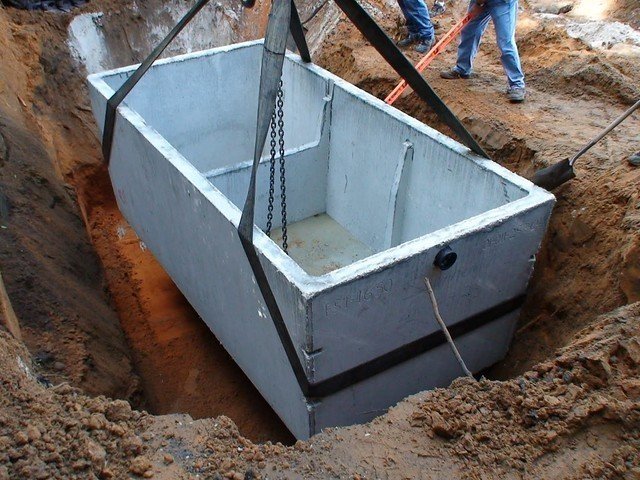
SEPTIC TANK REPAIRS & NEW SEPTIC TANK INSTALATIONS
Risers and manholes are critical components to safely service your underground septic tank. They provide safe access to your tank. It will enable maintenance, cleaning, and repair work no matter the weather conditions. Our expert team has the knowledge and skills required to meet the installation regulations and guidelines.
18’ & 24’ RISER INSTALLATION
Poorly serviced septic tank lid deteriorate over time. Hydrogen sulfide gas in your septic tank starts to damage the concrete and other parts. Cracked, broken, or otherwise compromised septic tank lids are very dangerous. Adults, children, animals or pets may fall into your tank. To prevent a catastrophe, we will inspect the condition of your septic tank lid. If the septic tank lid is broken we can replace it or refer you to a septic tank professional who will be able to help.
SEPTIC TANK TOP REPLAICMENT
A septic system works seamlessly when they have been serviced and maintained regularly. It is crucial to check on it every 3-5 years. It will extend its life the value of your property, and maintain the health of the environment. Our team of expert has a wide range of maintenance solutions for your septic tank. We install new systems, leach lines and much more.
TANK REPAIR &
SEPTIC TANK INSTALATION
Upon the septic tank pump out, our knowledgeable team performs a general inspection. The septic system should be inspected every 3-5 years, as well as when you decide to sell your property. This will enhance the home’s value, extend your septic tank life, and can help to avoid any costly repairs. We would assess the septic tank and drain field operation. Lids are present, secure, and free from cracks or excessive wear and tear. Is the baffle wall in good condition? Inlet and outlet pipes are firmly connected to the tank’s and check for root intrusion.
LEACH LINE REPAIR AND INSTALATION
RESIDENTIAL SEPTIC SERVICE AREA
SAN DIEGO COUNTY
WHAT TO LOOK OUT FOR WHEN IT COMES
TO SEPTIC TANK PUMP OUT?
Do you know where is your septic tank located?
Before septic tank pump out you should know your septic tank location. If you don’t know, here are some tips on how to find your septic tank.
House Plans or Records: If available, check your house plans or property records. They might indicate the septic tank's location.
As-Built Drawing: Contact the local health department or the septic system installer for an as-built drawing. It provides the exact location of the tank.
Visual Clues: Look for visual indicators such as manhole covers or inspection ports. They could be round or square lids usually made of plastic or concrete.
Follow the Plumbing: Trace the path of the main sewer line from your house to get an idea of where the tank might be buried.
Previous Service Records: If you've had the tank serviced before, the service provider might have noted the location. Review past maintenance records.
Professional Help: If you're unable to locate the tank, consider hiring a professional septic service provider. They often have tools like probes or electronic locators to find it accurately.
Do you know how to expose your septic tank lid?
Exposing your septic tank lid can be a bit of work. However, it is necessary for maintenance, septic pump out, and inspection. Here's a basic guide
Locating the Lid: Utilize the previously mentioned tips to locate your septic tank. Typically, it features 2 round or square covers made of plastic or concrete.
Gathering Tools: You'll require a shovel, a probe or metal rod, a crowbar or pry bar, a bucket, and possibly a hose.
Clearing the Area: Remove any debris or vegetation covering the lid. Be cautious not to damage nearby utilities or plumbing lines. Wear gloves and eye protection, and work cautiously to prevent injury.
Probing the Lid Edges: Gently use a probe or metal rod to outline the lid's edges. This helps determine its boundaries without causing damage.
Digging: Begin digging around the lid's edges with a shovel. Exercise caution to avoid harming the lid or any pipes.
Prying Open: After excavation around the lid, please wait for the Modern Septic Service team to arrive. We'll handle the lid opening for you.
Inspection: Be cautious after clearing the lid. Concrete and plastic lids may deteriorate over time and break under weight. Never step on them. Use a crowbar to tap the surface and check for solidity. Cease if it breaks or develops cracks. Measure the size and inform the Modern Septic Service Team to organize a lid replacement.
Securing the Dugout: Close up the excavation to prevent accidents. Ask the team to refill the hole after completing the septic tank pump-out."
Should you give instructions to the driver before arrival?
Always inform the septic tank driver about potential difficulties in accessing the septic tank on site, consider mentioning the following:
Terrain Obstacles: Describe any challenging terrain, such as steep slopes, uneven ground, or obstacles like rocks or trees that might hinder access.
Vegetation Cover: If the tank lid is obscured by dense vegetation, mention the need for clearing or trimming before accessing the lid.
Underground Utilities: Highlight the presence and location of any underground utilities or nearby pipes to prevent accidental damage during excavation.
Location Clarity: If the septic tank's exact location isn't clearly marked or known, communicate this to the driver, providing any guidance or information available to help them find it.
Access Space: Inform about limited access points, narrow pathways, or restricted space around the tank, which might impact maneuvering the pumping truck.
Lid Condition: If there are concerns about the lid's stability, such as cracks, decay, or potential fragility, alert the driver to exercise caution when working around it.
Safety Measures: Any specific safety precautions needed due to nearby hazards or conditions, like unstable ground, should also be communicated for the driver's awareness.





